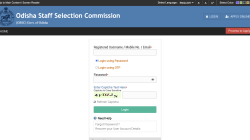More families are looking for fresh ideas on how to plan summer fun that actually interests teenagers, as screen time, rising costs and packed schedules make planning tougher than ever. Instead of forcing full itineraries, many now choose shared activities that let teens stay involved without sacrificing freedom or blowing the budget. This gives teens more control over their time while helping families stay connected through low-pressure and meaningful experiences.
Summer plans no longer need to be packed from morning to night to feel worthwhile. Families are making space for downtime, giving teens a chance to unplug, reflect and enjoy the quieter side of the season without pressure.
Start the day with movement
Morning offers the best window for movement before the day fills up or temperatures climb. Many public parks now feature free fitness trails or obstacle setups that are easy to reach and don’t require sign-ups or fees. For young adults who like a little structure, short hikes under two miles or casual bike rides offer just enough activity without feeling like a chore. Those who prefer company can join community fitness meetups or drop-in programs.
Active plans do more than keep teens busy. They promote
bone health
, encourage healthy growth and development of muscle and improve motor and cognitive development. That kind of movement supports individual well-being and family rhythm, making shared time easier to enjoy and sustain.
Cultural break with visual appeal
Temples and other historic sites hold teens’ attention when they deliver bold visuals without long tours. Immersive or playful architecture works better than stops packed with facts. Keep visits short and optional to maintain interest.
Many heritage sites now allow respectful photography or short videos, opening the door for teens to engage creatively on their own terms. Museums and cultural spaces are also using QR codes to build interactive features like scavenger hunts, mini games or quizzes that encourage young visitors to explore more actively. These experiences let young adults sharpen their digital skills while staying involved in the visit with family.
Lunch and leisure at local spots
Lunch doesn’t have to mean sitting down at a restaurant. Many public markets offer casual food stalls where teens can roam, sample snacks and decide what they want on their own. Trying each other’s favorite foods also opens a door to conversation. When parents sample teen favorites like Korean corn dogs or bubble tea, and teens try long-standing family go-tos, it’s a low-stakes way to learn something about each other. Shared discoveries like a viral fusion bite or a treat neither has tasted create a memory that sticks.
Beyond food, these spaces often feature extras like handmade jewelry, graphic tees or quick pop-up experiences. As day markets stretch into the evening, music and performers give the place a more social vibe, turning lunch into something that feels more like an outing than a break.
Include a touch of tech
It’s a good idea to work in time for activities that match teen interests, especially when it comes to tech. Digital tools can move screen time away from passive use and into something social, creative and worth remembering.
Immersive play zones
Virtual reality arcades continue to grow in popularity, offering short sessions that work well for flexible family plans. Teens can team up with parents in cooperative games like rhythm battles or virtual sports simulations, where shared play replaces small talk and helps bridge the gap between generations.
Blend tech with talent
Motion-based games like Beat Saber, Dance Rush Stardom and Sound Voltex combine physical activity with fast-paced interaction, giving young adults an active and engaging screen experience. Other digital setups let teens create with sound in new ways. Virtual instruments respond to motion, touch or voice, allowing users to simulate playing full instruments. These setups are built for short bursts of play and creative training, turning tech into a tool for movement and connection instead of passive entertainment.
Quick reset by the water
Short
summer getaways
to a nearby beach or resort pool offer a quick shift in energy without the long-haul travel. These spots create space for laid-back family time and light activity that doesn’t feel scheduled. Teaching teens to swim or practicing together becomes less about instruction and more about showing up for each other. For those who’d rather keep it easy, floating, digging pools or shaping forts make room for connection without forcing conversation.
Let downtime lead
Building in gaps between activities helps teens recharge and stay engaged without burnout. Low-effort breaks matter just as much as outings, whether that’s zoning out in an air-conditioned mall, doing a casual app-based quest or hanging out at home over a board game or comfort show. These pauses give teens space to reset while keeping the connection intact.
Keep it fun, not forced
Summer plans don’t need a packed schedule to feel meaningful. The key is building a rhythm that balances light structure with personal choice, giving teens the space to lead or unplug as they need. From virtual games to slow afternoons or snack runs that spark conversation, it’s less about planning everything and more about showing up for the moments that actually stick.
Zuzana Paar is the creator of
Sustainable Life Ideas
, a lifestyle blog dedicated to simple, intentional and eco-friendly living. With a global perspective shaped by years abroad, she shares everyday tips, thoughtful routines and creative ways to live more sustainably, without the overwhelm.
The post
How to plan summer fun that actually interests teenagers
appeared first on
Food Drink Life
.







